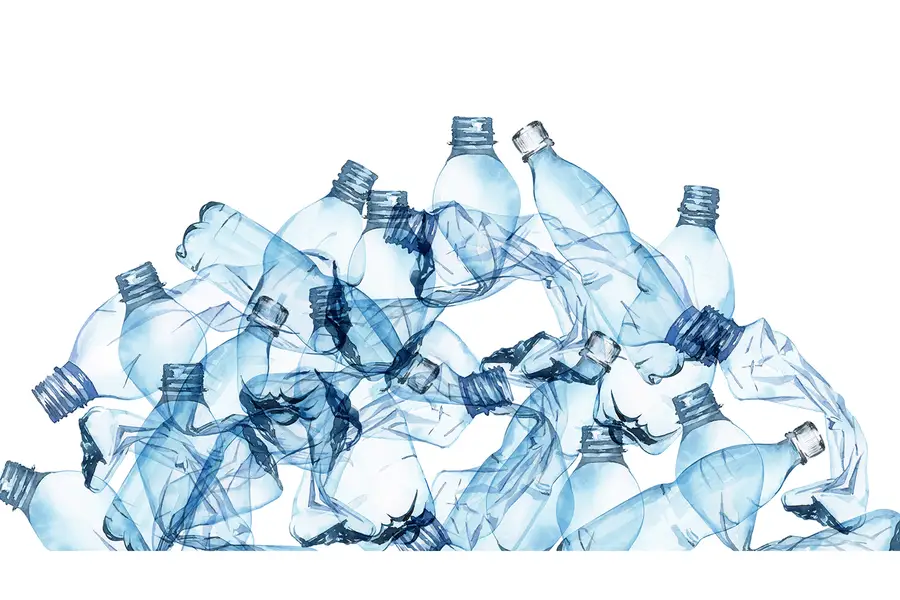Insights
Circular Economy Offers Solutions to Plastic and Climate Crises

Though the timeline of human existence spans at least 200,000 years, it was only about 70 years ago that we transitioned to a disposable economy. While that approach has brought us more consumer goods—and greater levels of comfort and convenience—it’s producing mountains of waste, much of it plastic packaging, that is contaminating our environment, affecting our health, and threatening natural habitats and species.
As we mark the 54th anniversary of Earth Day—this year themed Planet vs Plastics—it’s become clear that our linear “take, make, and consume” economy is unsustainable, leaving behind tons of waste every minute. As a by-product of oil or gas refining, plastic also supports the use of fossil fuels, which are the primary cause of the greenhouse gas emissions driving climate change. In response to this growing environmental crisis, governments and industry are shifting toward embracing the tenets of a circular economy.
What is a Circular Economy?
The concept of circular economy builds upon approaches such as pollution prevention, the ‘three Rs’ of reduce, reuse, and recycle, and industrial ecology, which uses byproducts from one process as feedstock for another. Circular economy is perhaps best described as a macro approach that reduces virgin material use, redesigns materials and products to be less resource intensive, and recaptures “waste” as a resource to manufacture new materials and products.
In short, it’s a holistic way of looking at our production and consumption process to thoughtfully manage a product through its life cycle. This starts at the design phase, by asking these questions: Do we need it? Is there a better way to do it? How can a product and its packaging be designed to ensure that it can be easily recycled, reused, or reprocessed? And how can we expand a product's life span, so it doesn't become waste immediately after use?
A circular economy also requires us to scrutinize emerging and innovative technologies with an eye toward the unexpected consequences of their adoption. Plastic, for example, has so much utility that it’s being used in ways that were never initially considered. As a result, it is now one of the most ubiquitous products on the planet, comprising 80% of all marine debris. About 79% of all plastics produced have ended up in landfills and dumps. Once plastic enters the environment, it contributes to pollution and a range of other unanticipated concerns, such as entangling wildlife and accumulating in our bodies.
As we reduce plastic production, it’s also critical to manage the end of a product’s life by implementing robust solid waste management (SWM) systems across the globe. An estimated 8 million metric tons of plastic enter the ocean each year. We can prevent plastic and other waste from leaking into the ocean by ensuring that every community has access to collection, recycling and proper disposal, as well as to markets to offtake recycled content as feedstock for new products. As we have demonstrated through our work from Jamaica to Maldives, these issues can be approached in a way that improves livelihoods and addresses the social justice component underlying many environmental issues.
How Do We Transition to a Circular Economy?
Shifting from a linear to a circular economy can affect multiple aspects of our lives, such as the production of consumer goods and maintaining human and environmental health. It’s a highly complex issue that demands big thinking and a coordinated, cross-sectoral, systems-strengthening approach.
RTI International is employing its multiple-disciplinary expertise to facilitate this transition across the entire spectrum, from leading cutting-edge research on the health impacts of consuming nano- and microplastics to implementing collaborative projects to reduce ocean plastics by decreasing plastic inputs and improving SWM practices.
An important aspect of a circular economy is an honest review of whether a product is needed and replacing plastic with alternative materials. For example, we support a USAID project in Sri Lanka that is assisting a local business in developing edible ice cream cups, coffee lids, and spoons. We are also pursuing research into new materials, such as biobased polymers that can be readily composted or recycled, and assisting the municipalities responsible for SWM in building capacity and creating customized solutions to their needs.
Our work with commercial clients in manufacturing, med-tech, consumer goods, and other sectors pursues answers to their specific questions, such as how to meet emerging regulations or develop packaging that is recyclable, but still ensures that food is preserved. We can also help them identify more sustainable packaging options. There is no one-size-fits-all approach. By considering technical feasibility, technological innovations, behavioral changes, systems capacity, regulatory policies, funding, disparities in resources, and other factors, we are charting a science-informed roadmap to a circular economy.
What Challenges Do We Face in Adopting a Circular Economy?
There are no simple solutions in transitioning to a sustainable, circular economy. It is, at its core, a highly complex systems problem. This is illustrated by global companies navigating different—even conflicting—policies and regulations for packaging. Additionally, local waste processing sectors need to evolve to handle compostable packaging, ranging from versatile equipment to achieving the right balance of materials needed for successful composting. Consumer behavior also needs to change so new types of packaging are understood and managed appropriately.
Outcomes from new material use must also be considered. For instance, if switching from plastic packaging shortens a product’s shelf life, then food waste can increase and needs to be managed. Eliminating plastic water bottles would reduce litter and the ingestion of nano plastics, but if people living in communities with non-existent or inadequate water treatment facilities rely on them for safe drinking water, affordable water filtration and alternatives like aluminum bottles (and aluminum recycling infrastructure) need to be made available.
It’s important for policy makers to consider the potential of a Green Premium—the higher cost that consumers may have to pay for more sustainable products. While lower-income populations typically bear the brunt of plastic pollution, the transition to a circular economy should not increase poverty and reduce overall well-being.
What Actions are Needed?
The challenges before us can be met by understanding and creating cross-sector change all along the circular economy pathway. This includes private sector leadership in redesigning packaging and developing new materials, local governments taking initiative to build infrastructure and capacity, consumer groups educating communities about purchasing decisions and recycling, and policies that support the growth of new businesses around the reuse of recycled materials.
In addition, the global community can draw attention to the urgency of this issue through coordinated policies such as the United Nations Plastic Treaty, which is currently being negotiated. Country support is increasing as governments take action to convene and pass laws, including recycling mandates and plastic bag bans at the local level, as well as the European Union’s restrictions on single use plastics. There is also a trend toward mandating extended producer responsibility (EPR), which encourages the adoption of innovative materials and requires those who make goods to accept responsibility for helping to fund end-of-life management.
Earth Day: A Catalyst for Change
Climate change underscores the urgency of transitioning to a circular economy. Recent hurricanes have devastated much of Puerto Rico’s local agriculture, requiring it to import more food—with all its plastic packaging. Litter, including plastic bags that clog storm drains, can exacerbate flooding during heavy rains. Solving the problems associated with plastics and plastic pollution is a critical step in addressing both the climate crisis and emerging concerns around the human and environmental health risks associated with microplastics, which are now ubiquitous, though still poorly understood.
Earth Day was created in 1970 to focus attention on the critical need to ensure clean air and water and it succeeded in mobilizing people and catalyzing meaningful change. As we celebrate Earth Day 2024, we can build on that momentum to make similar progress in embracing a post-plastic era. By integrating innovative thinking, collaboration, and climate change mitigation, we can transition to a circular economy that supports true sustainability.
Learn more about how RTI works to address plastic pollution and combat plastic pollution in the ocean.
Learn more about services provided by RTI’s Innovation Advisors.
Disclaimer: This piece was written by Keith Weitz (Director, Sustainability and Resource Management), Jamie Pero Parker (Sustainability Team Lead, Senior Innovation Advisor), and Zubair Fattahi (Senior Manager, Urban Resilience) to share perspectives on a topic of interest. Expression of opinions within are those of the author or authors.



